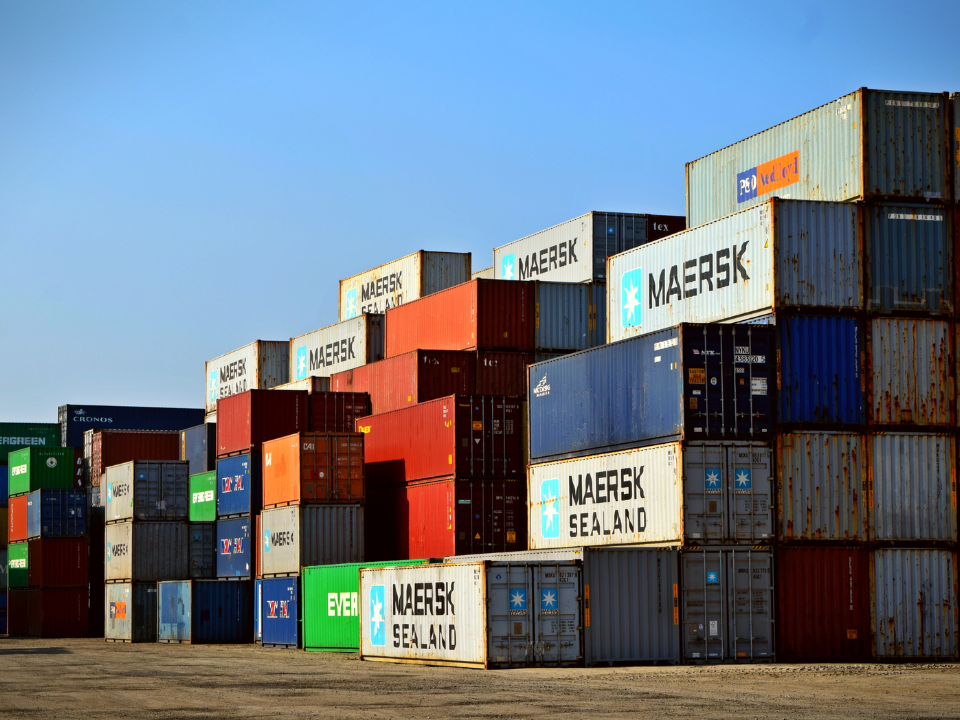- The International Longshoremen’s Association (ILA) is striking across 14 major East and Gulf Coast ports, involving approximately 50K longshoremen.
- The strike follows failed negotiations between the ILA and the U.S. Maritime Alliance (USMX) over a new contract, with disputes over wage increases, automation, and container royalties.
- Billions of dollars in trade, accounting for between 43–49% of all U.S. imports, are now snarled by the strike, impacting industries from pharmaceuticals to retail.
According to CNBC, the International Longshoremen’s Association (ILA), North America’s largest maritime union, has launched a nationwide strike across major East and Gulf Coast ports, leaving billions of dollars in trade stranded.
Behind The Strike
After negotiations with the United States Maritime Alliance (USMX) failed to reach an agreement on a new contract, approximately 50K ILA members began walking off the job at 12:01 a.m. ET on Tuesday. This strike, the first of its kind since 1977, involves 14 major ports from New England to Texas.
The strike follows months of failed contract negotiations between the ILA and USMX. The union is demanding a $5 hourly wage increase each year over six years, tighter restrictions against automation, and full royalties for containers handled.
Despite a nearly 50% wage increase offer from the USMX over six years, the ILA rejected the proposal, leading to a work stoppage.
ILA President Harold Daggett emphasized the union’s stance, insisting on fair compensation and clear prohibitions on automation in port operations. Daggett, who participated in the last strike in 1977, reiterated that the very real threat of automation remains a key sticking point.
Port-to-Port Impact
The strike impacts at least 14 major ports, including New York/New Jersey, Boston, Philadelphia, Baltimore, Norfolk, Charleston, Savannah, Miami, Tampa, New Orleans, Mobile, and Houston.
New York Governor Kathy Hochul confirmed that roughly 100K shipping containers were “in limbo” at the New York/New Jersey terminals as the strike began. The disruption comes at a critical time, with ongoing efforts to manage supply chains already strained by Hurricane Helene’s impact on Southeastern ports.
The ports in question handle a significant portion of U.S. imports—between 43% and 49%, according to estimates. The strike’s impact could cost the U.S. economy $3.78B if it lasts just one week, and it could cause prolonged supply chain delays, according to The Conference Board.
Supply Chain Strain
Logistics experts warn that the longer the strike lasts, the worse the congestion and backlog will become, having a ripple effect on ocean, trucking, and rail carriers globally.
A short disruption of a week or two may result in minor backlogs, but a prolonged strike could lead to significant shortages, supply chain issues, and potential price increases, especially in key sectors like retail and automotive.
The National Retail Federation has expressed particular concern, noting that many goods currently en route are intended for the upcoming holiday shopping season, and any further delays could ripple through the economy.
Industries on High Alert
Industries such as pharmaceuticals, food, and automobiles are particularly vulnerable due to their reliance on timely imports of raw materials and parts through these ports. Pharmaceutical imports, in particular, are at serious risk, as noted by Noushin Shamsili, president and CEO of Nuco Logistics.
The East Coast ports are a major entry point for generic drugs and active pharmaceutical ingredients (APIs) from India and Europe. Any disruption could delay the arrival of essential medical supplies and medications, putting pressure on hospitals and clinics that rely on just-in-time inventory.
The retail sector is also bracing for significant challenges. Steve Lamar, CEO of the American Apparel & Footwear Association, highlighted the crucial role East and Gulf Coast ports play in apparel and footwear imports, accounting for more than $92B in value annually.
The ILA strike threatens to create severe disruptions just as the holiday shopping season is about to ramp up, which could lead to empty shelves and lost sales.
Political Implications
Unsurprisingly, the ILA strike has garnered strong support from other unions, including the Teamsters and the United Auto Workers (UAW). Teamsters President Sean O’Brien emphasized solidarity with the ILA, stating that Teamsters members will not cross picket lines.
The International Longshore and Warehouse Union (ILWU) on the West Coast has also expressed support, signaling that efforts to divert cargo to West Coast ports may face additional obstacles.
The Biden administration has already engaged senior officials, including Transportation Secretary Pete Buttigieg and acting Labor Secretary Julie Su, in an attempt to mediate negotiations. However, President Biden has indicated he will not invoke the Taft-Hartley Act, a federal law that allows the president to suspend strikes deemed a threat to national safety or health.
The White House has reiterated its commitment to collective bargaining, noting that forcing workers back could undermine union rights.
What’s Next
With the U.S. presidential election just one month away, the strike places significant pressure on the administration to facilitate a resolution while balancing political and economic considerations.
The White House has stated that it does not expect immediate price increases for critical goods like fuel and food, but the longer the strike continues, the greater the potential for widespread economic repercussions.
For now, both sides remain far apart on key issues, and the prospect of a prolonged work stoppage looms large. The administration and port management are under pressure to return to the negotiating table quickly to avert a prolonged crisis that could cost billions and impact millions of Americans.

















